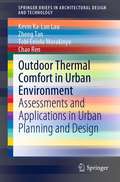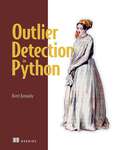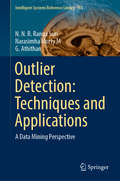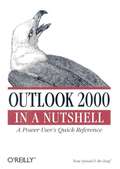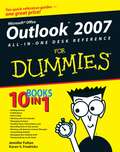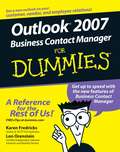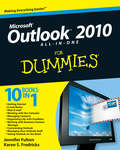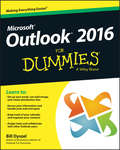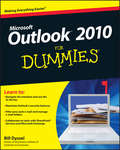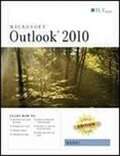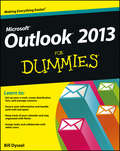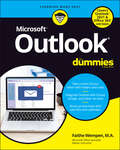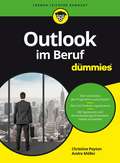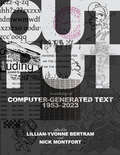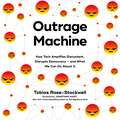- Table View
- List View
Out of Time: Desire in Atemporal Cinema
by Todd McGowanIn Out of Time, Todd McGowan takes as his starting point the emergence of a temporal aesthetic in cinema that arose in response to the digital era. Linking developments in cinema to current debates within philosophy, McGowan claims that films that change the viewer&’s relation to time constitute a new cinematic mode: atemporal cinema. In atemporal cinema, formal distortions of time introduce spectators to an alternative way of experiencing existence in time—or, more exactly, a way of experiencing existence out of time. McGowan draws on contemporary psychoanalysis, particularly Jacques Lacan, to argue that atemporal cinema unfolds according to the logic of the psychoanalytic notion of the drive rather than that of desire, which has conventionally been the guiding concept of psychoanalytic film studies. Despite their thematic diversity, these films distort chronological time with a shared motivation: to reveal the logic of repetition. Like psychoanalysis, McGowan contends, the atemporal mode locates enjoyment in the embrace of repetition rather than in the search for the new and different.
Outcome-Based Marketing
by John D. LeavyMarket. Succeed. Repeat.Can you measure the progress of your online campaigns in finite numbers? What percentage of your website traffic is converted into sales? What is your cost-per-conversion rate? If you don't already know the answers to these questions, don't worry-you will.Internet strategist John D. Leavy challenges you to take a new approach to your online marketing-shifting from doing more, to doing more of what works. Using Leavy's outcome-based strategies, learn how to create dynamic marketing campaigns integrating metrics and milestones for continuous success. Leavy invites you to uncover the absolutes behind building massive online awareness, attracting your target audience, and capturing online sales."John Leavy's masterful Outcome-Based Marketing is the most complete and accurate guide I'veever read about succeeding on the Internet without making silly and common errors.I simply cannot imagine finding the pot of gold offered online without John's superb information serving as your compass and guide."-Jay Conrad Levinson, The Father of Guerrilla Marketing, Author, Guerrilla Marketing series"By the time you get down to chapters 20-ish through 25 or so, you'll have to cancel your cable subscription. Leavy has you doing a ton of stuff that is going to blow your business up, whether you're still working for The Man, or whether you're going to do this for yourself."-Chris Brogan, President of Human Business Works and co-author of New York Times bestseller Trust Agents"Outcome-Based Marketing is the breakthrough book on how to sell more, faster and easier, on the internet, against any competition."-Brian Tracy, Author, The Psychology Of Selling "It's not often you read a book that is focused on results. Too often, marketing, communication, and everything in between is seen as an expense. But John Leavy's tools help you take your effortsfrom the expense line on your P&L to the investment line on your balance sheet. It's a must-read for anyone using the web to grow their business."-Gini Dietrich, Chief Executive Officer of Arment Dietrich, Inc., and author, Spin SucksJohn D. Leavy is the founder of InPlainSite Marketing, www.inplainsitemarketing.com, a leading internet presence management firm, where he specializes in developing strategies related to strategic marketing, pay-per-click advertising, social media, web design, and search engine optimization. Learn more about John D. Leavy at www.johnleavy.com.
Outcome-Driven Business Architecture: Synergizing Strategies and Intelligence with Architecture
by Bhuvan Unhelkar Amit TiwaryThis book discusses business architecture as a basis for aligning efforts with outcomes. It views BA as complementary to enterprise architecture, where the focus of technological initiatives and inventories is to understand and improve business organization, business direction, and business decision-making. This book provides a practical, long-term view on BA. Based on the authors' consulting experience and industrial research, the material in this book is a valuable addition to the thought processes around BA and EA. The lead author has direct and practical experience with large clients in applying APQC capability framework for undertaking multiple enterprise-wide capability assessments.
Outdoor Action and Adventure Photography
by Dan BaileyThe difference between getting the shot and missing the shot comes down to split seconds and how you manage your gear and your technique. In Outdoor Action and Adventure Photography professional adventure sports photographer Dan Bailey shows readers how to react quickly to unfolding scenes and anticipate how the subject and the background might converge. Capturing those significant moments to produce powerful imagery that evoke the feel and mood of adventure requires specialized skills and a wide variety of creative ideas. This book teaches photographers how to think geometrically and how to pull together the elements that make for a successful shot, all while being immersed in the action. The practical manual will improve your technique for creating more compelling adventure imagery, whether you’re shooting ultra-marathoners splattered in mud, rock climbers in a crevasse, or mountain bikers hurtling past you. In this book, you’ll: • Discover the necessary equipment for shooting action, learn how to use it to its full potential, and develop a comprehensive adventure photography camera system that you can adapt to different shooting situations. • Learn specific techniques and creative ideas that help you freeze the moment and create images that convey excitement, mood, and the feel of adventure. • Learn advanced skills that can help you start defining your own particular style of action photography and create a "brand" of photography that’s based around your passion and your vision. • Examine case studies that break down the process for shooting different types of action subjects and see the nuts and bolts of how to create powerful imagery from start to finish.
Outdoor Flash Photography
by John Gerlach Barbara EddyMaximizing the power of your camera’s flash is difficult enough in a studio set-up, but outdoors literally presents a whole new world of challenges. John Gerlach and Barbara Eddy have taken the most asked about subject from their renowned photography workshops and turned it into this guidebook that is sure to inspire your next outdoor shoot, while also saving you time and frustration. Outdoor Flash Photography covers a range of practices from portrait to landscape, including unique strategies that the authors have pioneered through 40 years in the field. Mastering the use of multiple flashes to freeze action is shown through one of most challenging subjects in nature, hummingbirds in flight. This book will benefit photographers of all experience levels who are eager to evolve their outdoor photography and get the most out of their equipment.
Outdoor Thermal Comfort in Urban Environment: Assessments and Applications in Urban Planning and Design (SpringerBriefs in Architectural Design and Technology)
by Chao Ren Kevin Ka-Lun Lau Zheng Tan Tobi Eniolu MorakinyoThis book highlights the importance of outdoor thermal comfort for improving urban living quality in the context of urban planning and urban geometry design. It introduces readers to a range of assessment methods and applications of outdoor thermal comfort and addresses urban geometry and thermal environment at the neighbourhood scale using real-world examples and parametric studies. In addition, the subjective evaluations by urban dwellers and numerical modelling tools introduced in this book provide not only a comprehensive assessment of outdoor thermal comfort but also an integrated approach to using thermal comfort indicators as a standard in high-density cities. Given its scope, the book offers a valuable guide for urban climate researchers, urban planners, and designers, and policymakers pursuing more liveable urban environments.
Outlier Detection in Python
by Brett KennedyLearn how to identify the unusual, interesting, extreme, or inaccurate parts of your data.Data scientists have two main tasks: finding patterns in data and finding the exceptions. These outliers are often the most informative parts of data, revealing hidden insights, novel patterns, and potential problems. Outlier Detection in Python is a practical guide to spotting the parts of a dataset that deviate from the norm, even when they're hidden or intertwined among the expected data points. In Outlier Detection in Python you'll learn how to: • Use standard Python libraries to identify outliers • Select the most appropriate detection methods • Combine multiple outlier detection methods for improved results • Interpret your results effectively • Work with numeric, categorical, time series, and text data Outlier detection is a vital tool for modern business, whether it's discovering new products, expanding markets, or flagging fraud and other suspicious activities. This guide presents the core tools for outlier detection, as well as techniques utilizing the Python data stack familiar to data scientists. To get started, you'll only need a basic understanding of statistics and the Python data ecosystem. About the technology Outliers—values that appear inconsistent with the rest of your data—can be the key to identifying fraud, performing a security audit, spotting bot activity, or just assessing the quality of a dataset. This unique guide introduces the outlier detection tools, techniques, and algorithms you&’ll need to find, understand, and respond to the anomalies in your data. About the book Outlier Detection in Python illustrates the principles and practices of outlier detection with diverse real-world examples including social media, finance, network logs, and other important domains. You&’ll explore a comprehensive set of statistical methods and machine learning approaches to identify and interpret the unexpected values in tabular, text, time series, and image data. Along the way, you&’ll explore scikit-learn and PyOD, apply key OD algorithms, and add some high value techniques for real world OD scenarios to your toolkit. What's inside • Python libraries to identify outliers • Combine outlier detection methods • Interpret your results About the reader For Python programmers familiar with tools like pandas and NumPy, and the basics of statistics. About the author Brett Kennedy is a data scientist with over thirty years&’ experience in software development and data science. Table fo Contents Part 1 1 Introducing outlier detection 2 Simple outlier detection 3 Machine learning-based outlier detection 4 The outlier detection process Part 2 5 Outlier detection using scikit-learn 6 The PyOD library 7 Additional libraries and algorithms for outlier detection Part 3 8 Evaluating detectors and parameters 9 Working with specific data types 10 Handling very large and very small datasets 11 Synthetic data for outlier detection 12 Collective outliers 13 Explainable outlier detection 14 Ensembles of outlier detectors 15 Working with outlier detection predictions Part 4 16 Deep learning-based outlier detection 17 Time-series data
Outlier Detection: A Data Mining Perspective (Intelligent Systems Reference Library #155)
by N. N. Ranga Suri Narasimha Murty M G. AthithanThis book, drawing on recent literature, highlights several methodologies for the detection of outliers and explains how to apply them to solve several interesting real-life problems. The detection of objects that deviate from the norm in a data set is an essential task in data mining due to its significance in many contemporary applications. More specifically, the detection of fraud in e-commerce transactions and discovering anomalies in network data have become prominent tasks, given recent developments in the field of information and communication technologies and security. Accordingly, the book sheds light on specific state-of-the-art algorithmic approaches such as the community-based analysis of networks and characterization of temporal outliers present in dynamic networks. It offers a valuable resource for young researchers working in data mining, helping them understand the technical depth of the outlier detection problem and devise innovative solutions to address related challenges.
Outlook 2000 in a Nutshell
by Bo Leuf Tom SyroidOutlook 2000 in a Nutshellfills the need for an up-to-date and comprehensive reference book for sophisticated users who want to get all they can out of this powerful and versatile program.
Outlook 2003 Personal Trainer
by Customguide IncFully illustrated and jargon-free, the Outlook 2003 Personal Trainer book presents a clear view of the latest personal information program from Microsoft Office. With this handy reference by your side, you ll be able to better manage and organize email messages, schedules, tasks, notes, contacts, and other information. Includes a companion CD tutorial to guide you through each lesson interactively.
Outlook 2007 All-in-One Desk Reference For Dummies
by Jennifer Fulton Karen S. FredricksNine minibooks spanning more than 800 pages make this an indispensable guide for Outlook power usersCovers the new Outlook interface and features and offers detailed coverage of Outlook tools, techniques, and tricksMinibooks include: Outlook basics; e-mail, RSS, and news; personal information management; managing and controlling information; collaboration; functional forms; VBA programming; managing business information; and maintenance, management, and troubleshootingOffice has more than 120 million users worldwide-90 percent of the business productivity software market-and most of these users look to Outlook for e-mail, calendaring, and personal information management
Outlook 2007 Business Contact Manager For Dummies
by Karen S. Fredricks Lon OrensteinKeep track of customers, coordinate projects, and implement initiativesThe fun and easy way(r) to put BCM to work and make more money in less timeLooking to make the most of Business Contact Manager? This nuts-and-bolts guide gets you up and running with this powerful software in no time. You'll take advantage of the latest features -- from customizing fields to integrating with Office Accounting -- to keep your business operating smoothly. Create quotes, orders, and invoices in a flash so you can focus on sales!Discover how to:* Create and manage a database*Organize your day*Share data among multiple users*Synchronize laptop data with a master database*Improve your customer relationships
Outlook 2010 All-in-One For Dummies
by Jennifer Fulton Karen S. FredricksExtensive coverage on using Microsoft Outlook to manage and organize your dayAs the number one e-mail client and personal information manager, Microsoft Outlook offers a set of uncomplicated features that maximize the management of your e-mail, schedule, and general daily activities, with the least amount of hassle possible. Comprised of ten minibooks in one and packed with more than 800 pages, this All-in-One For Dummies reference walks you through the convenience of Microsoft Outlook and introduces you to the newest features of the 2010 version.After a description of how to get started with Outlook 2010, you'll get complete coverage on e-mail basics, advanced e-mail features, working with the calendar, managing contacts, and working with Business Contact Manager. You'll learn how to track tasks, take notes, and record items in the journal, as well as customize and manage Outlook and get mobile with Outlook.Offers soup-to-nuts coverage of Microsoft Outlook 2010, the newest version of the number one most popular e-mail managerWalks you through getting started with Outlook and e-mail basics, and gradually progresses to more advanced features and capabilities of e-mailExplains how to work with the Outlook 2010 calendar and manage your contactsAddresses tracking tasks, taking notes, recording items in the journal, and working with Business Contact ManagerShows you how to customize your Outlook, manage all the information within Outlook, and take Outlook on the roadGet a whole new outlook on Outlook 2010 with this complete guide!
Outlook 2010 For Dummies
by Bill DyszelGet up to speed on the new features of Outlook 2010 with this fun and friendly guideAlthough Microsoft Outlook is the number one most popular e-mail and productivity tool, many utilize only a fraction of its true potential. This easy-to-understand guide walks you through an abundance of often-overlooked tips and tricks so that you can take advantage of all that Outlook has to offer.Outlook 2010 For Dummies introduces you to the user interface, and explains how to use the To-Do bar, filter junk email, and make the most of Outlook's anti-phishing capabilities. Before you know it, you'll be managing e-mail folders; sharing your calendar; using RSS support; integrating tasks with OneNote, Project, Access, and SharePoint Services; accessing data with two-way sync and offline access; and more.Shares invaluable advice for taking advantage of the newest version of the most popular e-mail and productivity tool: Outlook 2010Reveals little-known tips and tricks of underused features of Microsoft OutlookPresents information in the beloved fun and friendly For Dummies style, showing you how to manage your e-mail, share your calendar, use RSS support, access data, and moreDescribes how to manage your day by filtering junk e-mail, using the To-Do bar, taking advantage of anti-phishing capabilities, and much moreThis helpful guide shows you how to work smart with Outlook 2010!
Outlook 2010 For Dummies
by Bill DyszelGet up to speed on the new features of Outlook 2010 with this fun and friendly guide Although Microsoft Outlook is the number one most popular e-mail and productivity tool, many utilize only a fraction of its true potential. This easy-to-understand guide walks you through an abundance of often-overlooked tips and tricks so that you can take advantage of all that Outlook has to offer. Outlook 2010 For Dummies introduces you to the user interface, and explains how to use the To-Do bar, filter junk email, and make the most of Outlook’s anti-phishing capabilities. Before you know it, you'll be managing e-mail folders; sharing your calendar; using RSS support; integrating tasks with OneNote, Project, Access, and SharePoint Services; accessing data with two-way sync and offline access; and more. Shares invaluable advice for taking advantage of the newest version of the most popular e-mail and productivity tool: Outlook 2010 Reveals little-known tips and tricks of underused features of Microsoft Outlook Presents information in the beloved fun and friendly For Dummies style, showing you how to manage your e-mail, share your calendar, use RSS support, access data, and more Describes how to manage your day by filtering junk e-mail, using the To-Do bar, taking advantage of anti-phishing capabilities, and much more This helpful guide shows you how to work smart with Outlook 2010!
Outlook 2010: Basic (Student Manual, First Look Edition)
by Axzo Press StaffThis ILT Series course covers the basic functions and features of Outlook 2010. After an introduction to Outlook's window components and the Help system, students will read and send e-mail messages using several techniques. Then they will learn how to manage e-mail messages and attachments, configure message options, and use search folders. Students will also learn to manage contacts and use the People Pane, work with tasks, and create appointments. Finally, they will learn to send and respond to meeting requests.
Outlook 2013 For Dummies
by Bill DyszelThe fun and friendly way to manage your busy life with the new Outlook 2013 As the number one e-mail client and personal information manager, Microsoft Outlook offers a set of uncomplicated features that maximize the management of your e-mail, schedule, and general daily activities, with the least amount of hassle possible. This easy-to-understand guide walks you through Outlook 2013 and introduces you to the latest features. You'll learn how to find information quickly, handle e-mail, coordinate schedules, keep current with contacts and social networks, and much more. Walks you through getting started with Outlook 2013 and then provides you with complete coverage on e-mail basics, advanced e-mail features, working with the calendar, managing contacts, and integrating Outlook with other applications Shows you how to track tasks, take notes, and record items in the journal, as well as filter out junk e-mail, activate Outlook's privacy and security features, and more Explains how to customize your Outlook, manage all the information within Outlook, and take Outlook on the road Outlook 2013 For Dummies offers you a whole new outlook on Outlook 2013!
Outlook 2019 For Dummies
by Bill Dyszel Faithe WempenGet up to speed with the world’s best email application — Outlook 2019 Of the millions of people who use Outlook, most only use about two percent of its features. Don’t stay in the dark! Outlook 2019 For Dummies shows you how to take advantage of often-overlooked tips and tricks to make it work even better for you. Inside, you’ll find information on navigating the user interface; utilizing the To-Do bar; filtering junk email; smart scheduling; RSS support; using electronic business cards; accessing data with two-way sync and offline and cloud based access, and much more! Make the most of Outlook's anti-phishing capabilities Share your calendar Integrate tasks with other Microsoft applications and services Manage email folders If you’re upgrading to the latest version — or have never used this popular email tool — this book makes it easier than ever to get Outlook working for you.
Outlook For Dummies
by Faithe WempenLearn all about the best application for emailing, scheduling, collaborating, and just plain getting stuff done Did you know that Microsoft Outlook can do everything, including cook your dinner? Okay, it can’t cook your dinner. But it can deliver your email, filter out the junk, help you organize your life, sync data to the cloud, integrate with iOS and Android, and about a zillion other things. Outlook For Dummies shows you how to work all the basic and advanced features of the Office 2021 version. Outlook is loaded with interesting productivity tools that most people—even in business environments—don’t know about. Did you know you can create automated mail-handling rules? Translate messages into other languages? Share your calendar with other people? It’s true, and when people start wondering how you suddenly got to be so productive, you can tell them: Outlook For Dummies. Take a stroll around the basic interface and emailing capabilities of Outlook for Office 2021 Use Outlook to create daily and monthly schedules, manage a to-do list, organize messages into folders, and make notes for later reference Discover advanced and little-known features that will help you get organized and stay on top of things Sync email across your devices and access Outlook from any computer, tablet, or phone For users who are brand-new to Outlook and those upgrading to the latest version, this book makes it simple to get going.
Outlook im Beruf für Dummies (Für Dummies)
by Christine Peyton Andre MöllerEin überquellendes Postfach, zu viele Meetings, nie genügend Zeit? Nutzen Sie Outlook richtig - Nicht nur zum Mailen, sondern auch und vor allem zur Organisation Ihrer Kontakte, Termine und Aufgaben. Christine Peyton und Andre Möller zeigt Ihnen, wie Ihnen Outlook hilft, Prioritäten zu setzen, Mails und Unterlagen schnell wiederzufinden, Wichtiges von Unwichtigem zu unterscheiden und vieles mehr. Halten Sie Ihren Posteingang aufgeräumt, deaktivieren Sie lästige Funktionen, archivieren Sie mit System. Planen Sie Besprechungen mit mehreren Teilnehmern, lassen Sie sich Terminüberschneidungen anzeigen, reservieren Sie Räume und Geräte. Beherrschen Sie das Chaos!
Outlook professionell nutzen für Dummies (Für Dummies)
by Christine Peyton Andre MöllerEin überquellendes Postfach, zu viele Meetings, nie genügend Zeit? Nutzen Sie Outlook richtig - nicht nur zum Mailen, sondern auch und vor allem zur Organisation Ihrer Kontakte, Termine und Aufgaben. Christine Peyton und Andre Möller zeigen Ihnen, wie Ihnen Outlook hilft, sich zu organisieren, Prioritäten zu setzen und vieles mehr. Planen Sie Besprechungen mit mehreren Teilnehmern und nutzen Sie die Funktionen von Microsoft 365 für die Zusammenarbeit. Halten Sie Ihren Posteingang aufgeräumt, finden Sie Mails und Unterlagen schnell wieder, lassen Sie sich Terminüberschneidungen anzeigen, reservieren Sie Räume und Geräte und archivieren Sie mit System. Beherrschen Sie das Chaos!
Outlooks and Insights on Group Decision and Negotiation
by Bogumił Kamiński Gregory E. Kersten Tomasz SzapiroThis book constitutes the proceedings of the 15th International Conference on Group Decision and Negotiation, GDN 2015, held in Warsaw, Poland, in June 2015. The GDN meetings aim to bring together researchers and practitioners from a wide spectrum of fields, including economics, management, computer science, engineering, and decision science. From a total of 119 submissions, 32 papers were accepted for publication in this volume. The papers are organized into topical sections on group problem structuring and negotiation, negotiation and group processes, preference analysis and decision support, formal models, voting and collective decision making, conflict resolution in energy and environmental management, negotiation support systems and studies, online collaboration and competition, and market mechanisms and their users.
Output: An Anthology of Computer-Generated Text, 1953–2023
by Nick Montfort Lillian-Yvonne BertramAn anthology of seven decades of English-language outputs from computer generation systems, chronicling the vast history of machine-written texts created long before ChatGPT.The discussion of computer-generated text has recently reached a fever pitch but largely omits the long history of work in this area—text generation, as it happens, was not invented yesterday in Silicon Valley. This anthology, Output, thoughtfully selected, introduced, and edited by Lillian-Yvonne Bertram and Nick Montfort, aims to correct that omission by gathering seven decades of English-language texts produced by generation systems and software. The outputs span many different types of creative writing and include text generated by research systems, along with reports and utilitarian texts, representing many general advances and experiments in text generation.Output is first and foremost a collection of outputs to be encountered by readers. In addition to an overall introduction, each of the excerpts is introduced individually and organized by fine-grain genre including conversations, humor, letters, poetry, prose, and sentences. Bibliographic references allow readers to learn more about outputs and systems that intrigue them. Although Output could serve as a reference book, it is designed to be readable and to be read. Purposefully excluded are human–computer collaborations that were conceptually defined but not implemented as a computer system.Copublished by Counterpath Press
Outrage Machine: How Tech Amplifies Discontent, Disrupts Democracy – and What We Can Do About It
by Tobias Rose-StockwellForeword by Jonathan Haidt, author of THE RIGHTEOUS MINDAn invaluable guide to understanding the technology that captures our attention with anger.The original internet was not designed to make us upset, distracted, confused, and outraged. But something unexpected happened at the turn of the last decade, when a handful of small features were quietly launched at social media companies with little fanfare. Together, they triggered a cascading set of dramatic changes to how media, politics, and society itself operates-inadvertently creating an Outrage Machine we cannot ignore.Author, designer, and media researcher Tobias Rose-Stockwell shares the defining shifts caused by these technologies, and how they have ignited a society-wide crisis of trust. Drawing from cutting-edge research and vivid personal anecdotes, Rose-Stockwell illustrates how social media has bound us to an unprecedented system of public performance, training us to react rather than reflect, and attack rather than debate.OUTRAGE MACHINE reveals the triggers and tactics used to exploit our anger, unpacking how these tools hack our deep tribal instincts and psychological vulnerabilities, and how they have become opportunistic platforms for authoritarians and a threat to democratic norms everywhere.But this book is not just about the problem. In a story spanning continents and generations, Rose-Stockwell explores how every new media technology disrupts our ability to make sense of the world, from the printing press to the telegraph, from radio to television. OUTRAGE MACHINE situates social media within a historical cycle of confusion, violence, and emerging tolerance. Using clear language and powerful illustrations, this book reveals the magnitude of the challenges we face, while offering realistic solutions and a promising pathway out.
Outrage Machine: How Tech Amplifies Discontent, Disrupts Democracy – and What We Can Do About It
by Tobias Rose-StockwellForeword by Jonathan Haidt, author of THE RIGHTEOUS MINDAn invaluable guide to understanding the technology that captures our attention with anger.The original internet was not designed to make us upset, distracted, confused, and outraged. But something unexpected happened at the turn of the last decade, when a handful of small features were quietly launched at social media companies with little fanfare. Together, they triggered a cascading set of dramatic changes to how media, politics, and society itself operates-inadvertently creating an Outrage Machine we cannot ignore.Author, designer, and media researcher Tobias Rose-Stockwell shares the defining shifts caused by these technologies, and how they have ignited a society-wide crisis of trust. Drawing from cutting-edge research and vivid personal anecdotes, Rose-Stockwell illustrates how social media has bound us to an unprecedented system of public performance, training us to react rather than reflect, and attack rather than debate.OUTRAGE MACHINE reveals the triggers and tactics used to exploit our anger, unpacking how these tools hack our deep tribal instincts and psychological vulnerabilities, and how they have become opportunistic platforms for authoritarians and a threat to democratic norms everywhere.But this book is not just about the problem. In a story spanning continents and generations, Rose-Stockwell explores how every new media technology disrupts our ability to make sense of the world, from the printing press to the telegraph, from radio to television. OUTRAGE MACHINE situates social media within a historical cycle of confusion, violence, and emerging tolerance. Using clear language and powerful illustrations, this book reveals the magnitude of the challenges we face, while offering realistic solutions and a promising pathway out.





